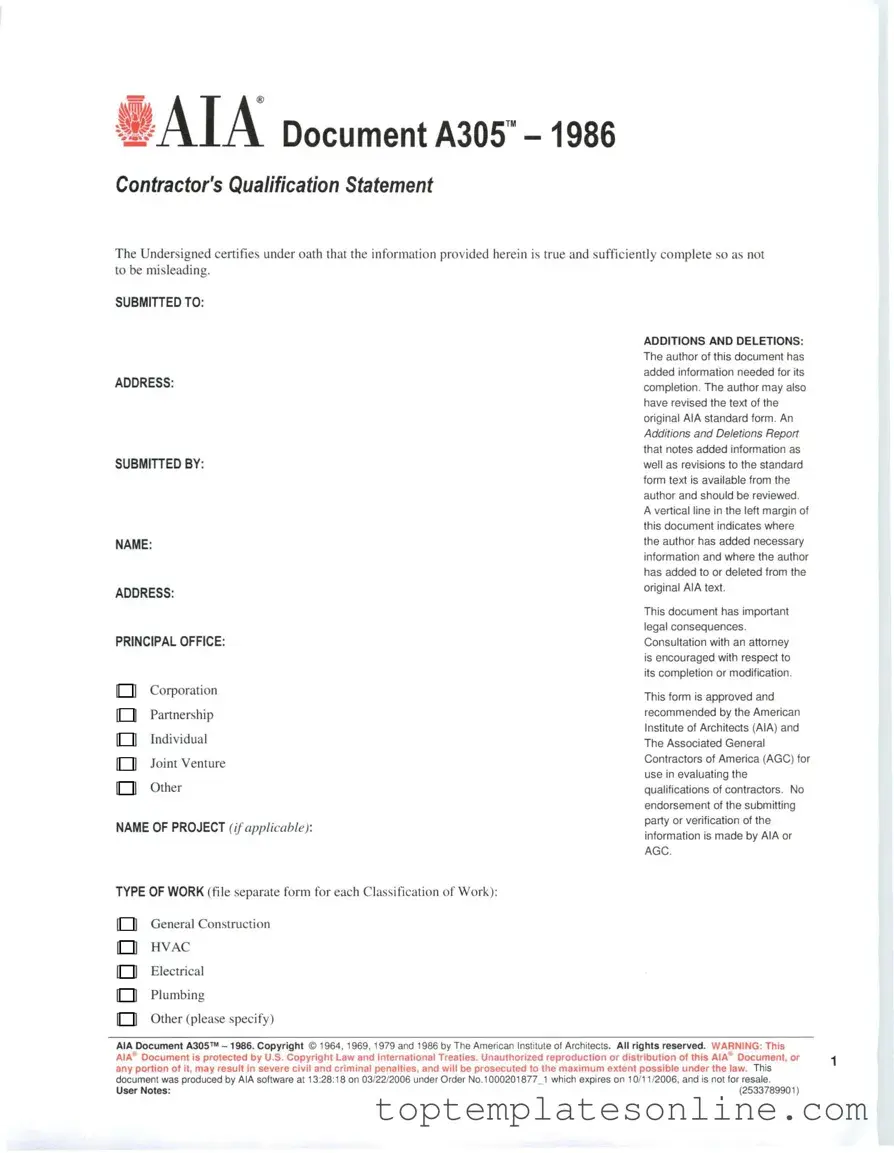Fillable AIA A305 Form
The AIA A305 form is a standard document used in the construction industry to provide a contractor's qualification statement. This form outlines the contractor's experience, financial status, and capabilities, helping project owners assess potential bidders. Understanding the A305 is essential for both contractors and owners to ensure a transparent and informed bidding process.
Customize AIA A305 Here
